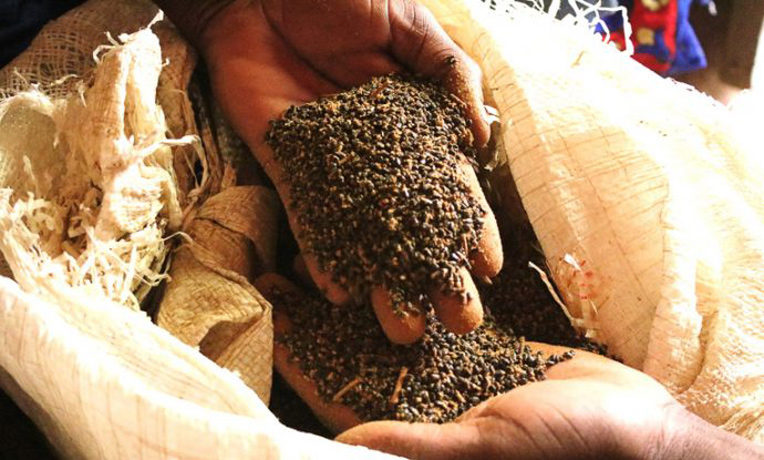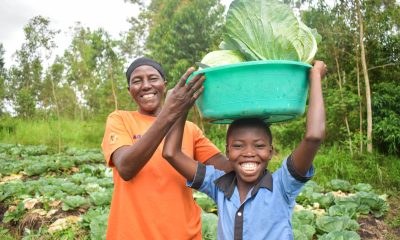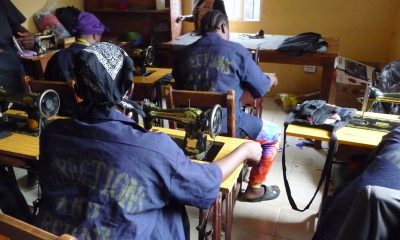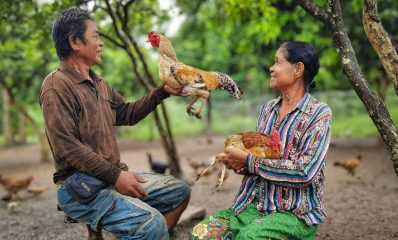The lasting impact of an evangelism project in Niger
As a country in the sub-Saharan climate of West Africa, Niger struggles yearly with heat and a shortage of rain. Particularly in the north of the country, the climate is dry and desert-like for most of the year, which creates a tough environment for crops and any kind of plants to grow.
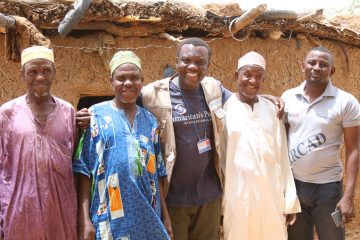
Samaritan’s Purse staff meets with Guidan Ara residents.
As a result, Nigeriens (pronounced “knee jairians”) whose lives are based on farming and agriculture must endure a lean season each year after food stores from the previous harvest run out and the next planting season is still weeks away.
One way Samaritan’s Purse Niger is helping to address these shortages is through the OPTIC project. OPTIC is built on an evangelistic strategy: a Christian couple is sent into a village to become part of the community.
As they share their lives and the Gospel they also begin projects to help their new village with solutions for clean water and sanitation, health and nutrition, and agriculture. These projects help meet critical needs and also tangibly demonstrate the love of Christ to unbelievers.
In the village of Guidan Ara, where some of these evangelists lived for three years, the impact of this project is apparent.
Though they’ve moved on to work in other villages, the imprint of their work is significant in Guidan Ara and in surrounding villages.
A Lasting Impact
The village of Guidan Ara is more than two hours from any large city. To an outsider like me it looks much the same as many other villages in Niger—a community of the familiar red-clay houses surrounded by sand and dunes.

Chaibou Ara, the chief of Guidan Ara, says acacia trees have been an important gift to his village.
But even I could see one notable difference: outside the village was a field of trees planted in careful rows and providing a surprising stretch of green in the middle of the dusty tan of Niger.
This was part of the OPTIC project—a field of acacia trees that the people of Guidan Ara have continued to nurture and maintain since the evangelists moved away.
The village chief, Chaibou Ara, showed the acacia field to me and some of the OPTIC coordinators when we came to visit. The field itself was only a short walk from the village, and when we arrived, the chief demonstrated how to cut down one of the trees for wood.
As he worked, the coordinators explained to me that the acacia trees were originally imported to Niger from Australia in the 1970s and are highly drought-resistant.
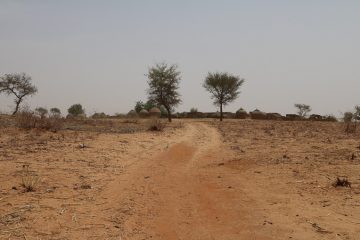
Guidan Ara is far from any large cities.
The wood can be used for cooking or sold to make money, the leaves fertilize the soil, the roots help to irrigate the ground, and the highly nutritious grain can be added to almost anything to add substance to someone’s diet.
In the acacia field where I stood, I could see that leaves were already heaped in small piles for fertilizer, and that the acacias had begun to produce grain.
When we had seen the acacia field, Chaibou Ara took us to his home so we could hear more about the results of the OPTIC project. As the only female in the group, I was given the only chair while the men sat on mats, and, as the only non-Hausa speaker in the group, I asked questions through a translator.
The chief told us that of all the ways that the evangelists had worked in Guidan Ara, the acacias have had the largest impact and have given the villagers opportunity to learn more about agriculture, health, and commerce.

Acacia trees are resilient, even in the dry ground of Niger.
Before the field began, the evangelists trained farmers on better agricultural techniques at a farmers’ field school.
They showed them the difference between traditional methods and improved practices with two model fields. When the improved techniques yielded better results, the farmers immediately adopted these practices and still continue to use them.
When the acacias were planted and began to produce grain, the evangelists held trainings on how to use the grains in food. This was one of the trainings that the villagers liked the most.
The women also learned to make food with the acacia grain and how to add it to the “boule,” a drink made with millet.
The village chief himself was trained on how to make coffee with the grains. He assured us that the coffee from the acacia grains is even better than regular coffee from other sources.
As the trees grew and supplied Guidan Ara with wood, grain, and many other benefits, nearby villages began to take notice. Even though there are several villages with the same name in Niger, this particular Guidan Ara is now identified by its trees.
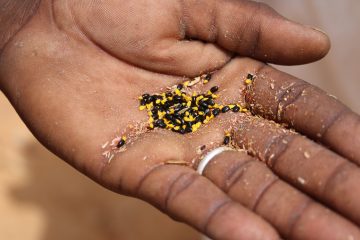
Acacia Grains provide important nutrition in the driest of conditions.
When people give directions to the village, even to taxis or moto drivers, they say, “It’s the Guidan Ara with the trees,” and immediately everyone knows which village it is. Even from as far away as Nigeria, where some of the children of Guidan Ara have gone, people have heard of the village with the acacia trees.
It’s a historic accomplishment for the village, Chaibou Ara told us. The trees have changed the people of Guidan Ara and have affected the next generation.
Each of the children in Guidan Ara will grow up with the acacia field outside their village. Their fathers will teach them how to care for the trees, and their mothers will teach them how to cook with the grains.
Even more, they will hear the story of the evangelists who brought the trees to the village, and they will see the impact of the trees on their village and on all the surrounding villages. Their hope, Chaibou Ara said, is that all the neighboring villages will be able to plant acacia fields, too.

